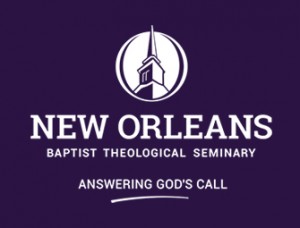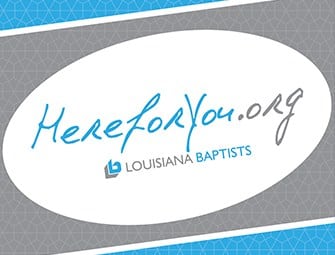By Randy Adams
The Southern Baptist Convention (SBC) needs a recovery program. Followers of Jesus, including those who lead, are not exempt from addiction to power, money, and sex, and we have been reminded of this with jarring frequency over the past few weeks and months. Deep wounds caused by multiple failures are now festering from infection. Added to the more public matters is a sick hubris that has caused some to weaponize money and leadership, intentionally hurting others, certain that they are smarter, wiser, or better than “them.” Much of the focus has been on the resignation of leaders and the firing of a seminary president, and rightly so, but perhaps worse than the headlines is our deficit of trust and partnership that has grown as large as the national debt. Although trust and partnership have been eroded in multiple ways, the serious erosion of cooperation and trust between the North American Mission Board (NAMB) and denominational partners has led to a collapse in the numbers of churches started and the number of new believers baptized.
Many think that we are in the midst of a church planting boom in the SBC. We are not. In the past two years we have tallied the lowest number of new church starts in decades, reaching a new low of 691 throughout North America in 2017. Moreover, new church plant numbers the past seven years are far below the seven years prior, while the church planting budget is 350 percent higher than it was in 2010! The truth is we are experiencing a colossal collapse in the number of new church plants while spending far more money from the NAMB budget. The primary reason that Southern Baptists are planting half as many churches as we were ten years ago is because the North American Mission Board (NAMB) has greatly reduced its cooperation with state and regional conventions in favor of a top-down approach in which NAMB mostly controls church planting outside of the south, and in which NAMB has greatly reduced funding for church planting in the south.
Add to this the fact that NAMB has slashed evangelism funding to about one third of what it was ten years ago. In 2010 NAMB had an evangelism staff of 52 people, organized into six teams, in addition to hundreds of state convention jointly-funded positions. In 2018 there are only two people in evangelism (a leader and his assistant) listed on NAMB’s website, and the one evangelism leader is also the pastor of a church with attendance over 1,000. This is especially striking when you learn that NAMB currently lists 30 staff doing marketing and event planning! At the state convention level, NAMB has also slashed evangelism funding for personnel, so that we have a fraction of the national evangelism leaders and far fewer evangelism implementers at the associational and state level.
Evangelism funding was reduced because, NAMB argued, the best way to do evangelism is to start new churches. While that can be debated, there is no debate that evangelistic funding from NAMB was intended to serve all 47,000 SBC affiliated churches, while church planting funding focuses only on church plants. Most evangelism is done by established churches because that’s where the vast majority of our people worship – common sense! But we are experiencing a disastrous drop in the number of new believers following Jesus in baptism. Baptisms have plummeted to a level not seen in more than 70 years. In 2015 we dropped below 300,000 baptisms for the first time since 1947, and in 2017 a total of 254,122 persons were baptized. This is a drop of 24 percent from 2011 when 333,000 were baptized. There is almost no living memory of a time Southern Baptists baptized so few. As seen in the chart below, we are currently experiencing the steepest decline in baptisms in recorded SBC history (source is the Journal for Baptist Theology and Ministry, Vol. 1 No 2, Fall 2003 and SBC Annuals).
The extreme reduction in cooperation between NAMB and state conventions, including the elimination of funding for hundreds of associational and state convention positions, has greatly reduced the ability of local Southern Baptist denominational entities (state conventions and local associations) to serve the needs of our churches, which is partly why we are experiencing serious decline (including a decline in Annual Church Profile reporting because of fewer associational and convention employees working to get the information). In the Northwest Baptist Convention our convention staff is less than half the number that we were in 2009. Believing the incendiary charge that state conventions were “bloated bureaucracies,” a handful of influential SBC leaders and influencers pushed for state conventions to give more cooperative dollars to the national SBC (a 50/50 split was called for), and NAMB reduced funding to state conventions at the same time. These actions, and the accusations that were hurled toward state conventions, have done great damage to relationships, destroyed trust, and damaged our ability to start churches and engage in a cooperative evangelism effort. Both church plant numbers and baptisms plummeted following the changes that began in 2010, which, ironically, was the year the Great Commission Resurgence (GCR) recommendations were adopted at the SBC in Orlando, FL, and in which the GCR called for “the phasing out of Cooperative Agreements” between NAMB and state conventions. Unfortunately, no effective cooperative strategy has replaced the cooperative agreements, thus we have become less effective at planting churches and doing evangelism than we were prior to the GCR. I’ve recently noticed that others, too, have recognized the need for recovery in the SBC, including those behind the Reform NAMB Now movement (www.reformnambnow.org).
Some think that talking openly and honestly about the fact of our decline, and the reasons for it, is “not helpful.” Some fear that if Baptists are told the truth it will demotivate cooperative giving. Apparently they weren’t taught the old Baptist axiom “trust the Lord and tell the people.” Transparency is vital. The truth of the matter is critical if we are to build and maintain trust. Unity without truth enables bad behavior. The people who support the work have a right to know the truth. They deserve an honest reporting of our present condition, and an honest and open debate, even if some leaders find it unhelpful to themselves.
Some might also think that because our entities are governed by trustees elected at the annual meeting of the SBC that it is unnecessary and counterproductive to discuss these matters in a public forum. But I believe that SBC trustees need to hear from rank-and-file, pew-sitting Baptists whose tithes are paying the bills. “Brett and Brianna Baptist” should not be kept in-the-dark about the issues and how their Cooperative Program mission’s dollars are being spent. Trustee boards operate best when the SBC constituency knows the issues and can discuss the issues with the trustees. Trustees represent Southern Baptist people and Southern Baptist Churches. They do not represent the entity on whose board they sit. Therefore, trustees need to hear from an informed constituency.
So, what can we do to build back trust and cooperation at all levels of the SBC? First, we must be open and honest about our present condition and not suppress “negative information” out of fear that Baptists cannot handle the truth. SBC entities need to present the reality of their situation and not merely provide reports that highlight the positives and conceal the challenges and failures. State conventions and associations must do the same. Acknowledging reality, and dealing with things as they really are, is where leadership begins. God’s people can handle the truth. What they cannot handle, and what they deeply resent, is the truth being concealed and covered up.
Second, building trust and cooperation requires selecting leaders who believe in the cooperative system, including the cooperative funding system that made the SBC the greatest missionary denomination we have ever known. Southern Baptists have some pastors who are effective leaders for their church, but they are not effective leaders denominationally because they do not sufficiently believe in, or participate in, the Cooperative Program method of funding our ministry and the cooperative structure that we have established locally, statewide, and nationally. Most Southern Baptists worship in churches of less than 200 on Sunday. These churches give the most money to cooperative missions and they send the most missionaries. They believe in, and practice, cooperative missions. We need leaders who understand this and celebrate the cooperative efforts and sacrifices of these churches. This doesn’t mean large-church pastors can’t lead the SBC – not at all! But it does mean these pastors need to believe in the cooperative method of missions from which we have benefitted for 90 years. If our missionary methods don’t capitalize on the combined strength of the 99 percent of our churches which have fewer than 1,000 on Sunday, we will continue to decline and fail to accomplish all that we could for the glory of God. In 2017 Southern Baptist churches gave $475 million to missions through the Cooperative Program and $215 million through the two national mission offerings. Those churches that strongly support the Cooperative Program need SBC leaders who do the same. SBC leaders must be able to look pastors in the eye and say, “imitate me” regarding Cooperative Program giving. If an SBC leader cannot do that, he’s like a pastor who implores his people to give generously while he gives miserly.
Third, we must return to a cooperative system between NAMB and state conventions that prioritizes a church planting and evangelism strategy that is formed and led mostly by those closest to the field of ministry. How can leaders in Alpharetta, GA know what’s best for Syracuse or Chicago or Seattle or Anchorage, not to mention the thousands of smaller communities that are inevitably overlooked by everyone except those who actually live there? This includes both church planting and evangelism strategies. In the name of planting more churches NAMB has exploded the church planting budget and slashed the evangelism budget. The result is far fewer churches being planted and a collapse in total baptisms. I believe this decline in church plant numbers is largely the result of a top-down national strategy that has reduced missionary boots-on-the-ground, ignored the input and pleas of local leaders, and destroyed the trust we once enjoyed between national and state convention leaders. It’s not working and the numbers tell the story. Actually, the numbers tell part of the story. The rest is told by the wreckage done to relationships and families in the implementation of this terribly flawed strategy.
Is the SBC still worthy of our support? Absolutely. We no longer have 5,600 international missionaries, but we still have 3,500 fully-funded missionaries and no other network of churches comes close to that number. Presently we are not starting 1,200 to 1,500 churches each year, but no other network started the 691 churches that SBC churches did in 2017. Can God rescue us and revive us and bless us once again? Without question He can. He’s done it many times before. But it’s a fact that churches die, movements die, and denominations have died too. It is not inevitable that we recover our former effectiveness, and it’s not even certain that we will survive for another generation. God’s plan is certain. He will prevail. Of that we can be certain. But whether the SBC continues to play a leading role in His plan is yet to be determined.
For now, we need prayer and repentance. We must execute a turnabout, spiritually, relationally, and strategically. Good organization and strategy won’t move the heart of a holy God. Only hearts directed toward Him, seeking first His kingdom and His righteousness, will bless God and cause His face to shine upon us. If we do that individually, we’ll be all right, come what may. As far as the SBC goes, a recovery program requires building trust, respect, and true partnership founded upon truth and acknowledging reality. If we can do this, we can recover and experience vitality once again.
Randy Adams is executive director of the Northwest Baptist Convention. This editorial first appeared on his blog.




